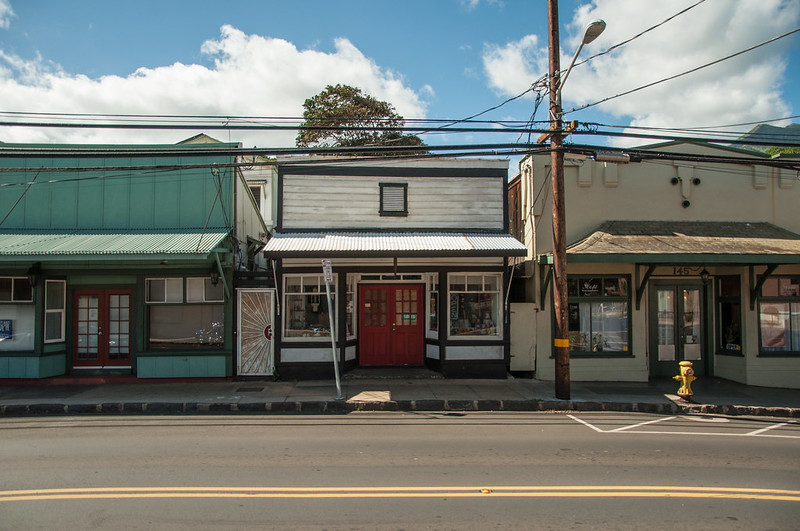
SMALL TOWN * BIG ART ON THE ISLAND
One time a friend asked one of the old-timers who had lived his whole life on the island of Maui through the decades that made up the beginning of the end of the twentieth century what it was like to live his life in this place. They were digging holes for pasture fence posts at the time.
The island had gone through numerous transitions during that one lifetime. Henry Burns had seen many of them.
The laconic old man stopped what he was doing and leaned against the ‘ō’ō digging stick he was using to settle in one of the fence posts they had just inserted into a hole they had dug into the ground.
He looked away across the distance past the rolling green hills of Kula pasture land towards the expanse of the central valley isthmus below them.
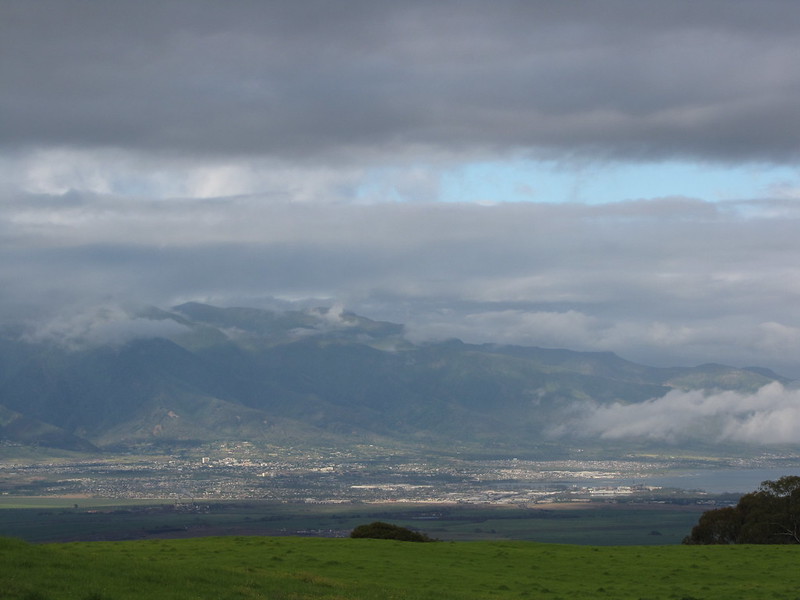
HISTORY IS JUST A BIGGER STORY
The place where Henry had grown up had been one of established old sugar cane and pineapple plantations, cattle ranches and family homesteads, and fishing villages plus a little bit of small town action.
Slower-moving steam ships and inter-island freight barges and ferries, horses, wagons, and the remnants of an old plantation train system lugged stuff and people around. By the mid-1900’s the technological advances of the times had inserted their tendrils into the place.
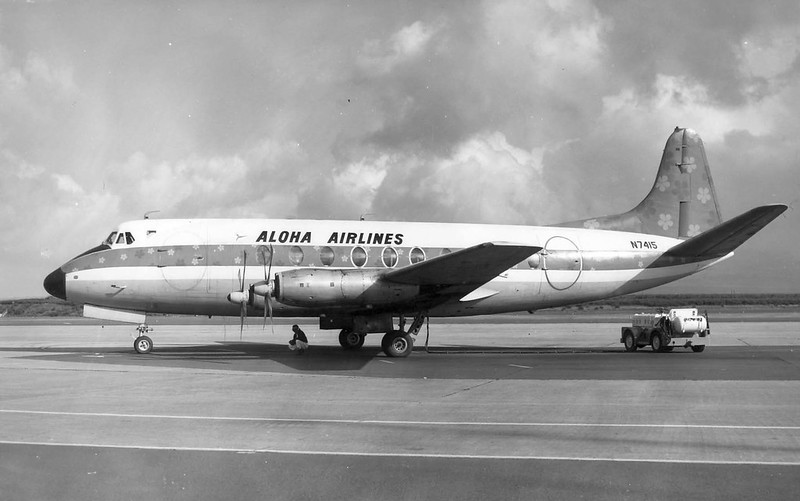
Time kept speeding up and the world was starting to get busier and more crowded. The sleepy, quiet, “Real Old-Style” way of living Henry had known was dying,
After some thought the old man said, “Some people come, some people go.”
That was it…the truth he had learned through the decades of his life.
STORIES MAKE A PLACE COME ALIVE
It was a profound thought, that. Underneath it all was a deep sense of the stories the people who were born and grew up here hold dear. The ones who had come from other places brought their own stories with them.
Henry knew. The stories he held were all about the lives of all of the people who lived together in this place the old man loved.
Many years later the same friend, who has spent a lifetime on the island as a transplant from another place, told me that when he travels through the highways and byways of our Maui it feels as if he is wandering through the shades and shadows of the old ghost towns that he once knew.
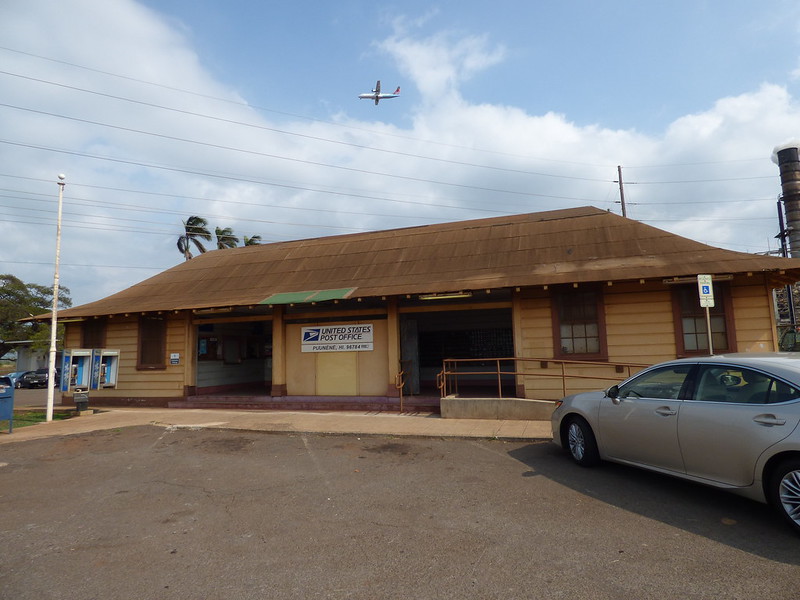
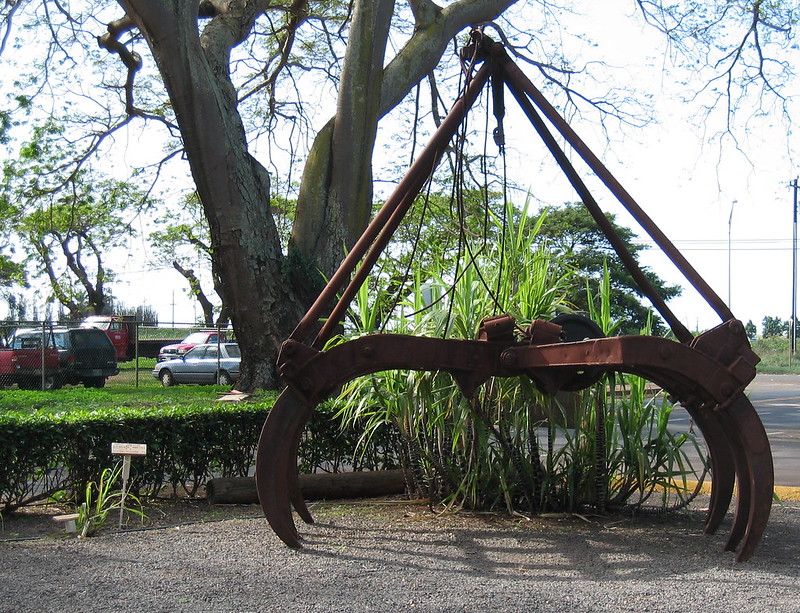
A NATIVE PERSPECTIVE ON A NEW-FANGLED COMMUNITY DEVELOPMENT IDEA
In case you didn’t know, among some of the more innovative urban planners, community developers, policymakers and other big-thinking Smarty Pants and creative sorts, there’s a fairly “new” concept of planning and community building strategies that’s growing stronger.
They recognize a community’s artistic and cultural assets and work with a particular community’s sense of heritage-based traditions and customs to develop programs and public art projects that help to revitalize and energize communities that have stagnated and faded.
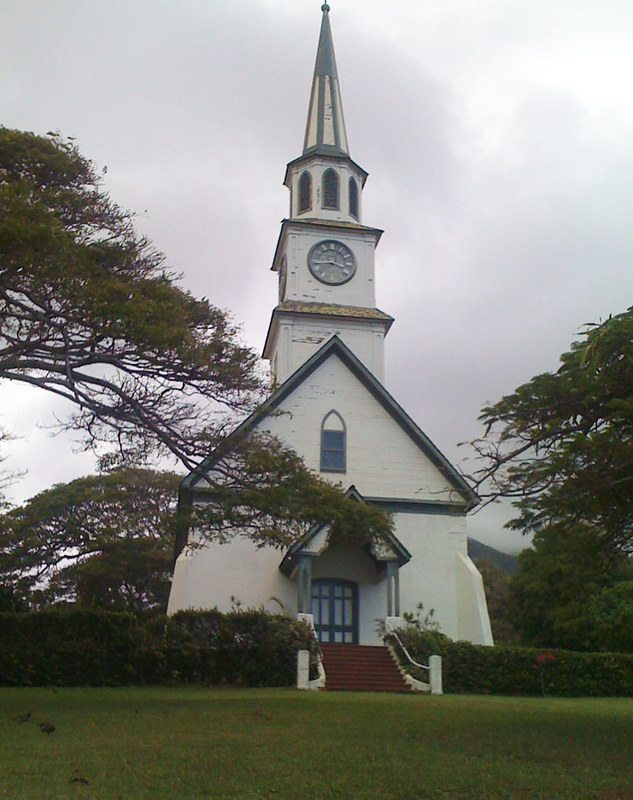
The Smarty Pants call it “creative placemaking.”
Native Hawaiians know all about this newfangled concept. They know that the spirit of a place is evoked when you name the winds that blow through it, the rains that fall upon it, and the mists that embrace it.
Indigenes, poets, artists and musicians know that bringing to mind a certain kind of tree or plant or animal or bird, and delineating the rolling movements of the water in the ocean waves and the tumbling waters of rivers and streams flowing amid the frozen energy of a mountain range that glows in the shimmering light calls up the ghosts of all the ones who have lived in this place.
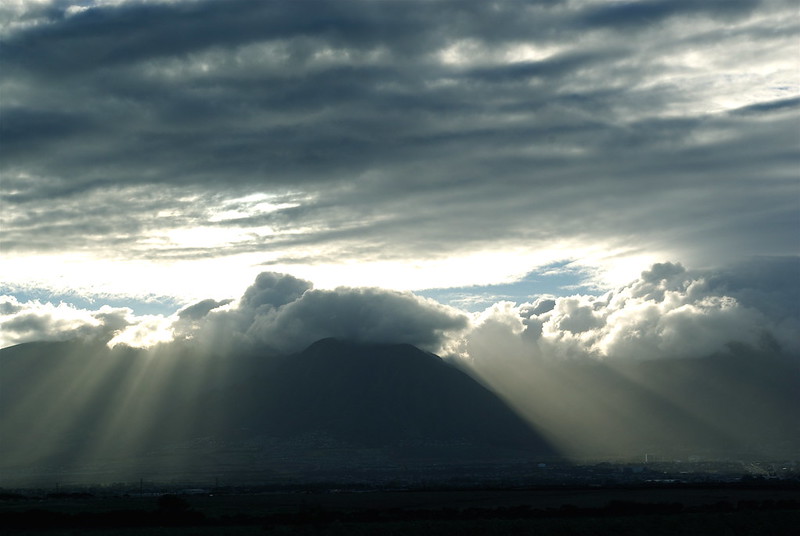
You can hear that knowing in the island music that shivers and pounds in time with the beating of a human heart and the voices of generations echoing the rhythms of wave and wind.
The following video, “Island Style | Õ’iwi Ē” is Playing for Change’s second “Song Across Hawaii” collaboration with the nonprofit @ Mana Mele. It was uploaded in 2017. Enjoy!
WHEN A COMMUNITY EVOKES THE MEMORIES OF PEOPLE AND PLACE, CONNECTION HAPPENS
The thing about evoking the spirits of a place is that the calling is quite likely to go fractal, unfolding outwards into patterns of beauty and shadow and light. It is all call-and-response as people come together to share their own bits and pieces.
On the windward side of the West Maui Mountains, Wailuku is often described in travel books as the “quaint” town located ten minutes away from the airport in Kahului. They usually throw in the part about it being the “gateway” for ‘Iao Valley, once a sacred burial ground for Hawaiian chiefs.
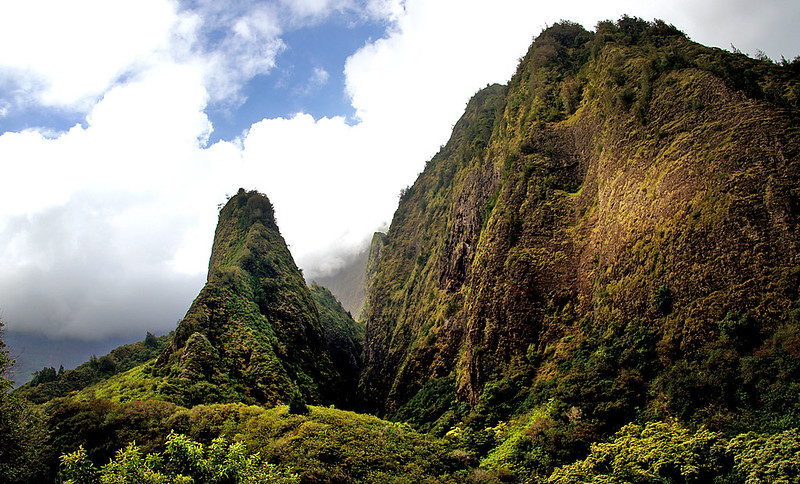
Wailuku town was a part of all of that and the remnants still remain.
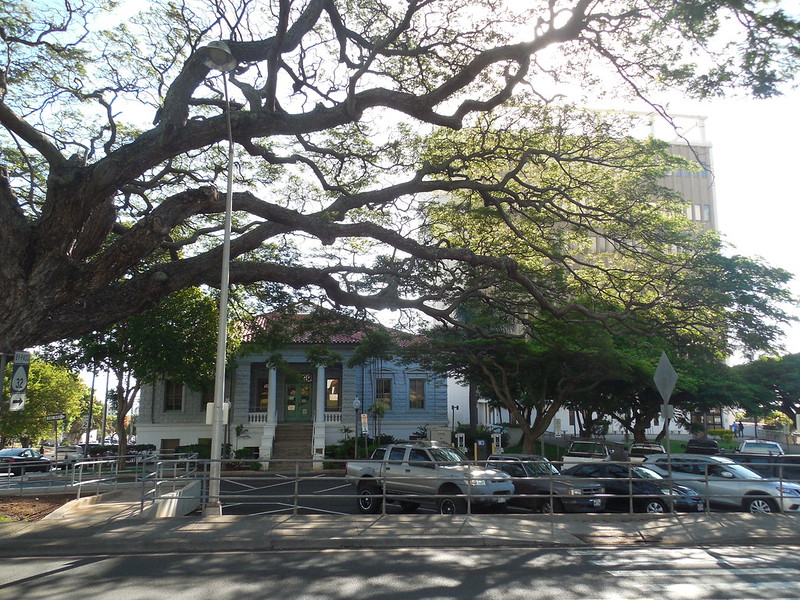
AN ISLAND TOWN RESUSCITATION
Since 2012, one of the major priorities for the Maui County Planning and Development department has been the revitalization of Wailuku town, the historic civic and business center of the county.
The town was suffering from the “dwindles” that began as the 1960’s ended. The beginning of the decline of the sugar industry that was a major part of the economy happened around that time.
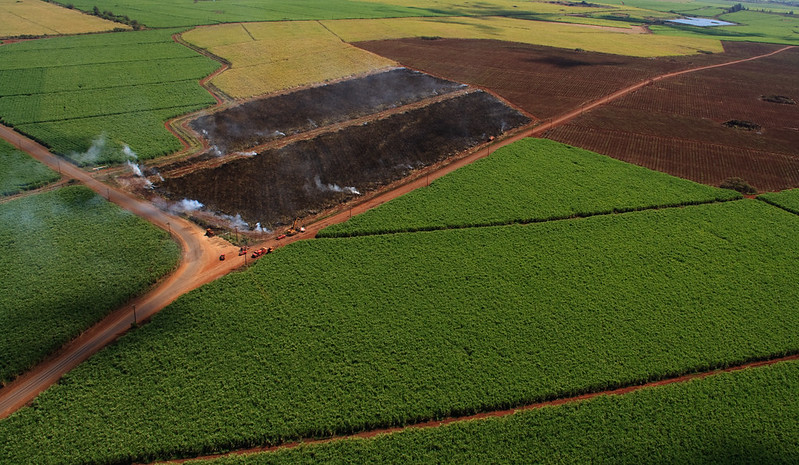
The town that had been the civic and business center of the island faded. For a while, empty storefronts amid a proliferation of pawn shops, second-hand stores and aging legacy businesses sat waiting for the next chapter in the story.

Over the years the County’s efforts to breathe new life into Wailuku has produced various programs and projects that are featured in the WailukuLIVE website.
Before the advent of the pandemic, the monthly Wailuku First Fridays were very popular and brought new businesses and liveliness to the town’s streets.
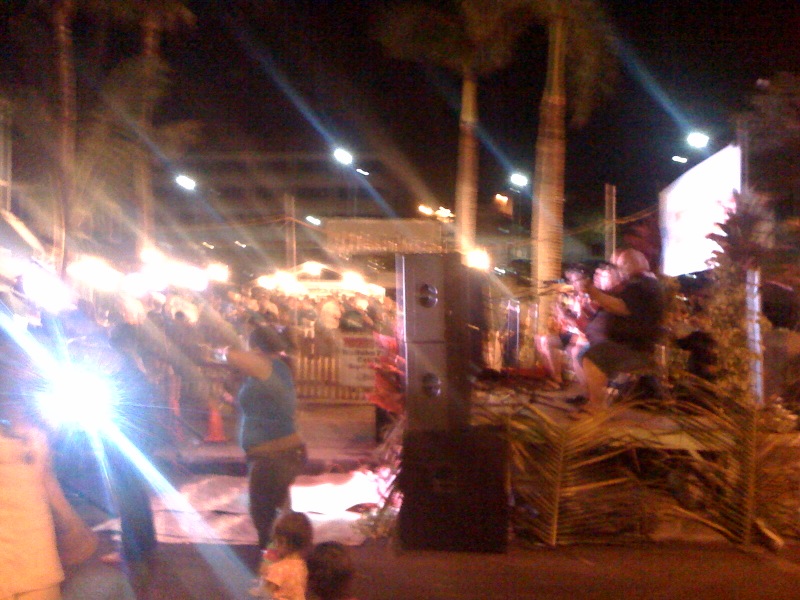
Improvement projects to the infrastructure of the place continue to upgrade old systems and work on new structural improvements to the town.
LOCAL CREATIVE PLACEMAKING GETS AN NEA BOOST
Then, in 2017, Kelly McHugh-White, an art administrator and advocate of development programs, wrote a grant proposal for an “Our Town” grant from the National Endowment for the Arts [NEA]. It was the start of a two-year pilot program (2018 to 2020).
(McHugh-White is the founder of Little Rhinoceros LLC, a company that consults with non-profits on content development for public relations and fundraising.)
One of the biggest differences between the creative placemaking projects grants and other NEA awards is the requirement that the artists who are involved in the project co-create the public art works with the community in which they will be displayed.
The call goes out for established artists to participate, but they don’t work alone.
In producing their works for these projects, all of the artists are welcomed into the community. They are also required to experience different aspects of the place through a process of community consultations, artist workshops and panel discussions in order to get an idea of the direction their work will go.
For the Wailuku project, public paint and play days that involved school children and their teachers and caregivers, as well as consultations and feedback from the people at Hale Ho’ike’ike (the Maui Historical Society’s Bailey House Museum) and with local people who were willing to share their stories and their lives helped to inspire the artists.

Wailuku’s first work of public art, Nā Wai ‘Ehā, was painted by nationally recognized muralist Eric Okdeh with the help of dozens of students of the Hui No’eau Visual Arts Center and other local volunteers.
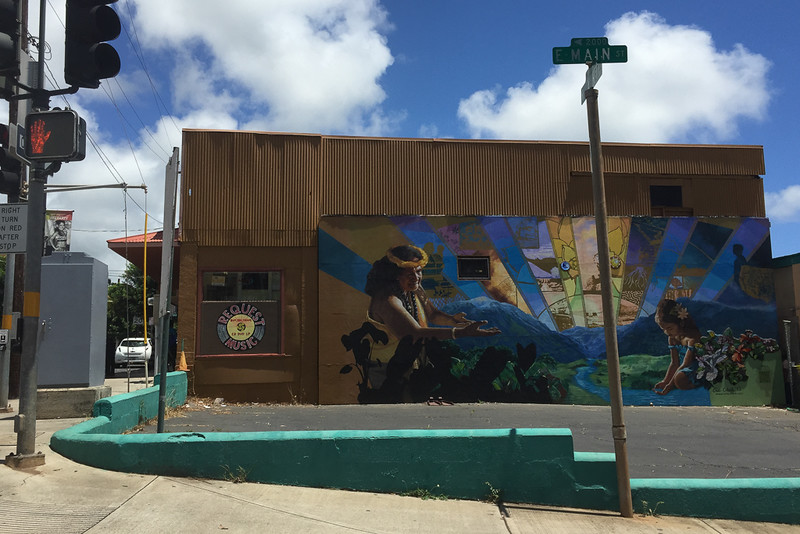
STARTER WORDS THAT CALLED UP THE STORIES
Other communal and public art projects soon followed, all of them informed by a list of Hawaiian proverbs selected by Sissy Lake-Farm, the executive director at the Maui Historical Society’s Bailey House Museum and a staunch advocate and supporter of the project, from Mary Kawena Pukui’s ‘Õlelo No’eau: Hawaiian Proverbs and Poetical Sayings.
This list of proverbs was a reflection of the values of the community and helped to influence the works that were eventually produced by the artists involved in the project and their helpers.
Here is the list:
- Ma ka hana ka ‘ike (In working, one learns)
- ‘Ike aku, ‘ike mai. Kōkua aku, kōkua mai. Pēlā ka nohona ‘ohana (Watch, observe. Help others and accept help. That is the family way)
- ‘A‘ohe hana nui ke alu ‘ia (No task is too big when done together by all)
- O ke aloha ke kuleana o kahi malihini (Love is the host in strange lands)
- E aloha kekahi i kekahi (Love one another)
- Ma kāhi o ka hana he ola malaila (Where work is, there is life)
- Hoʻolaukanaka i ka leo o nā manu (The voices of birds give the place a feeling of being inhabited)
- He lei poina ‘ole ke keiki (A lei never forgotten is the beloved child)
- Ka i’a mili i ka poho o ka lima (The fish fondled by the palm of the hand)
- E noho iho i ke ōpū weuweu, mai hoʻokiʻekiʻe (Remain among the clumps of grasses and do not elevate yourself)
- Mōhala I ka wai ka maka o ka pua (Unfolded by the water are the faces of the flowers)
- Wailuku i ka malu he kuawa (Wailuku, in the shelter of the valley)
- E kūlia i ka nu‘u (Strive to reach the summit)
- E ala! E alu! E kuilima! (Up! Together! Join hands!)
From there, the project which was spearheaded by the three women — Wade, McHugh-White and Lake-Farm — just kept on going and growing.
AN ON-LINE WALKING MAP
One of the best things to come out of the project, which was extended an extra year (through the end of 2021) by the County of Maui, is an interactive walking map app that shows the location of the ST*BA installations and projects scattered throughout Wailuku town.
Click the button below to see the map and check out the works that resulted from the project and the stories of how they were developed.
Maybe you’ll be able to figure out which of the proverbs served as a springboard for each of the works on display.
TO BE CONTINUED….
In January, 2022, the NEA approved a second two-year Grant for Arts Projects to support the Wailuku Town creative placemaking program and to make plans for countywide expansion.
The smalltownbig.org press release said,
“To date, SMALL TOWN * BIG ART has successfully implemented public art projects with 200+ community partners that have directly engaged 17,808 Wailuku participants. Virtual participation is consistently growing through a COVID-19 pivot strategy that has yielded 12 project documentaries designed to capture community impressions, ideas and context, as well as a 43-page interactive website and social media platform.”
Bragging rights deserved! Not only that, but there are more works on the way.
AND THEN THERE ARE THE OFFSHOOTS….
Excited by the success of the Wailuku SMALL TOWN * BIG ART project McHugh-White is spearheading the Maui Public Art Corps, a newly formed nonprofit that is a public-private partnership with the County. The group’s mission, it says here, is to “connect people, place and story through the development of exceptional public art.”
Like the sprouting shoots on a growing tree, other collaborations formed and continue to inspire even more outward expansions. One of the project’s artists was kumu hula Leilehua Yuen who put together an interactive series of workshops from April to July 2021.
During the pandemic response, when the world shut down, Yuen put together several storytelling videos that would have been delivered at various sites in person. I’m including one of them to give you a taste of the lady’s style.
Working with StoryCorps DIY and Akakū Maui Community Media, ST*BA hooked up the Yuen workshop participants with community kupuna (elders) for recorded “talk story” sessions.
During this time, ST*BA also partnered with Ball State University’s Center for Emerging Media Design and Development (EMDD) of Muncie Indiana for a yearlong collaborative project in trans-media journalism. Eight international EMDD graduate students analyzed the “problem-space” of building the Wailuku story. They worked on creating a story bank and making the bank publically accessible as part of their Masters Thesis project.
Meanwhile, most recently, there’s also planning afoot to establish a new Hawaiian cultural art center, Hālau of ‘Ōiwi Art, that is a collaboration between a group of Maui kumu hula (dance teachers) and the County. It will be located in Wailuku, they hope.
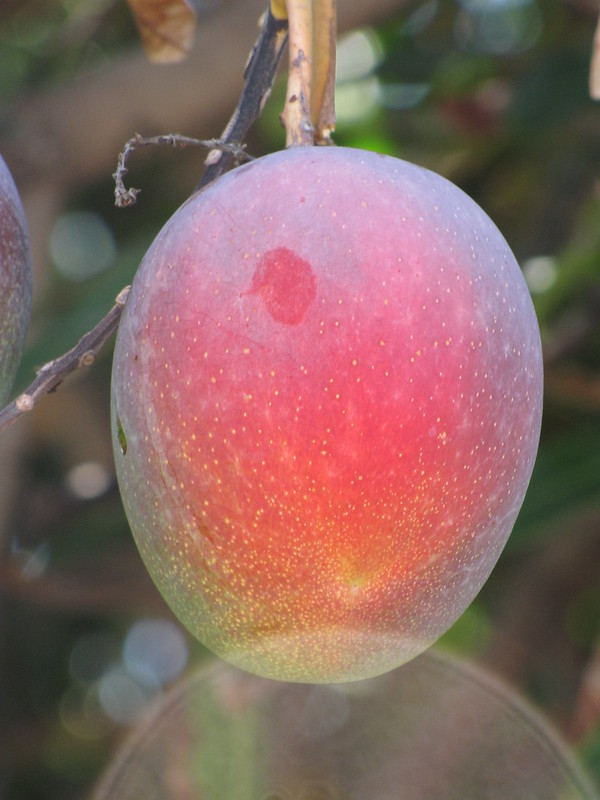
THE PAST IS ALWAYS PRESENT
The past is always present. It is just hidden.
Like the blossoms that once bloomed in glory, now turned sere and brown and lying crumbling into dust as they finally, finally lose the persistent essence that once announced their presence in the world,
And the bones of bodies once taut and strong and proud crumble down into the dirt, the food for worms and other agents of decay that take back again the gifts of once-brilliant minds, of hearts once-passionate,
Like the crumbling ruins of massive stones that were once proclaimed most marvelous of the wonders of the world, the works of hands long-stilled fade and disappear among the onslaughts of mold and atmospheric conditions into dust.
The past is always present. It hides in the dust of the world.
By Netta Kanoho
HEADER PHOTO CREDIT: Maui Wailuku storefronts by emmett anderson via Flickr [CC BY-NC 2.0]
……
SOME OTHER POSTS TO CONSIDER
(Click on each of the post titles below and see where it takes you….)
……
Thanks for your visit. I’d appreciate it if you would drop a note or comment below and tell me your thoughts.
10 thoughts on “SMALL TOWN * BIG ART ON THE ISLAND”
The island of Maui seems very interesting, complex and in another way beautiful. I can see that this place has a very long and deep story attached to it, which, like you said, can make a place come alive.
I also loved the poem at the end of the article, it spoke to me in a way. Thanks for sharing!
Logan, thank you for your visit and for sharing your thoughts. I do appreciate it.
Please do come again.
This article has given me the idea of how small villages turn up to be the biggest cities ever know by mankind. Coming to think of those villages, different people had to come together from different places with their own ideas of what a good city should look like.
Everybody, with their own stories, makes a city that no man has ever seen.
We can’t dwell in the past and we definitely can’t stay the way we are without changes. To become great cities, few different people have to come up with their own stories and create the city.
Johnny, I like your take on the post. You are right. Thinking on the power of story to build a world is an awesome thing!
Please do come again….
The Title is so simple, but content is really huge and valuable. I love to hear the story most from telling tales.
Never know in small island but have huge and precious art inside to show the world. I almost have chance to go to work in Hawaii but have to passed the opportunity and staying with my mother.
Pear, I am really pleased you enjoyed the post. Thanks for sharing your own story.
Please do come again.
Maui appears to be a very fascinating, intricate, and in some ways beautiful island. I can see that this location has a very rich history behind it, which, as you said, can bring a location to life.
The poetry at the end of the essay was also fantastic; Your writing is magical, and I appreciate you sharing it!
Thanks, Katherine. I appreciate your visit and your thoughts.
Please do come again.
This is the most beautiful website I have ever seen.
I have been to all of the islands but Maui No Ka Oi-Maui is the Best. I can only dream of returning as I sit here in Calgary at -29 degrees celsius.
This is so authentic. Despite all of the development the island still retains its beauty.
As a haole I appreciate the opportunity to visit such a beautiful island and my only regret was not buying a place there when I first visited in the 1970’s. Now it is far too expensive to think of doing that.
We have travelled the whole island over many vacations, attended church services held in Hawaiian and stayed at the Ka’anapali Beach Hotel which is the most authentic tie to old hawaii that most tourists can see.
Bravo to this web designer!
Thanks for the visit and for sharing your story, Taxmizer. I am so pleased you enjoyed the post.
Please do come again.